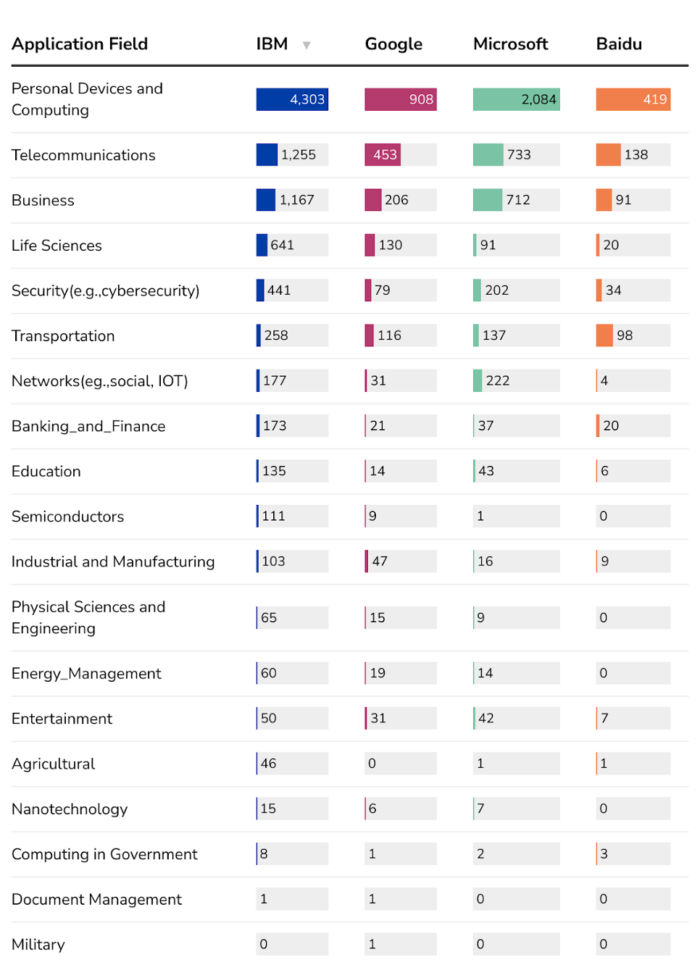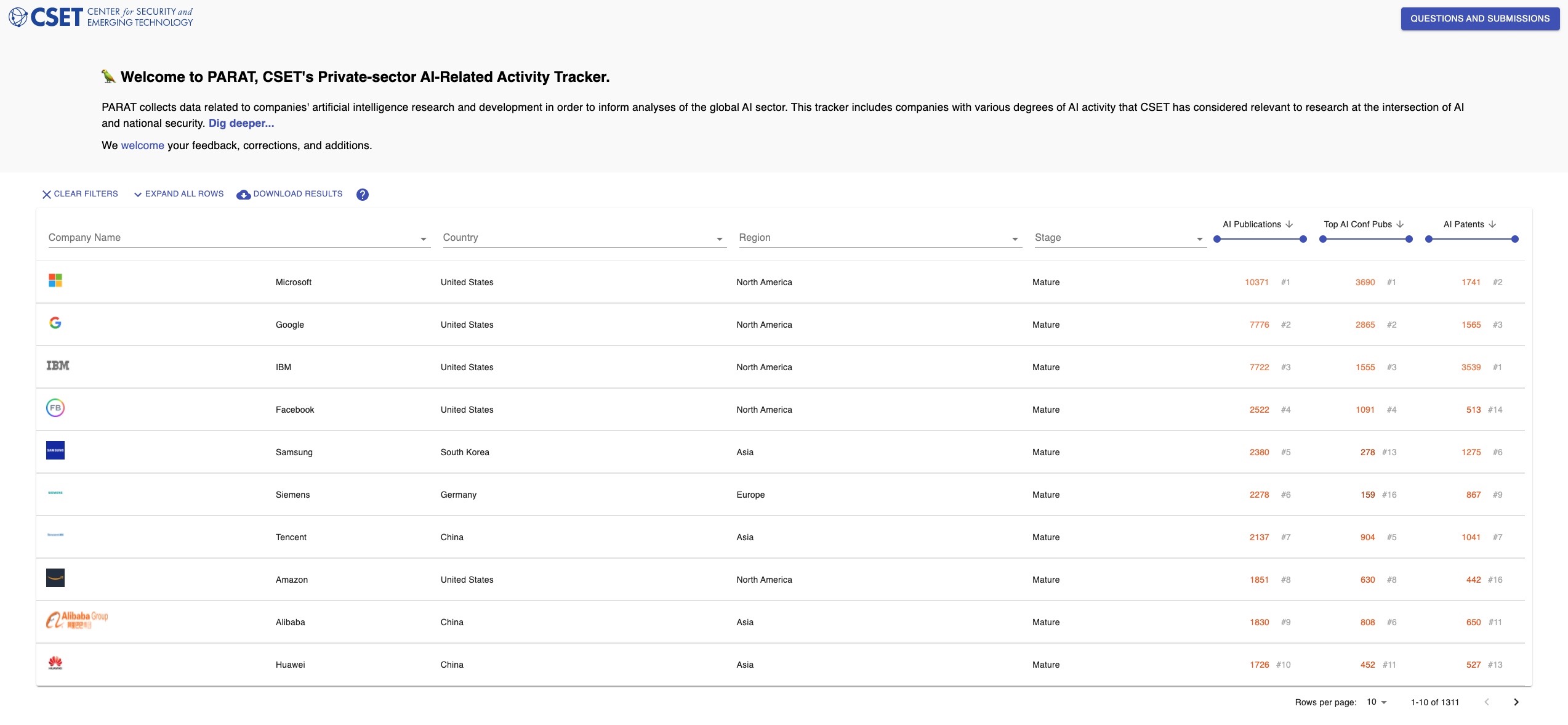In this second snapshot focusing on patent data from companies in CSET’s Private-sector AI-Related Activity Tracker (PARAT), we shift our focus from AI patent trends toward the applications of those AI patents. We have linked companies available in PARAT to CSET’s unified patents dataset of merged patent data from 1790 Analytics and Digital Science Dimensions to examine AI application fields, described as follows:
Table 1. AI Patent Application Fields
| Physical Science/Engineering | Personal Devices/Computing |
| Life Sciences | Banking/Finance |
| Security (e.g. cybersecurity) | Telecommunications |
| Transportation | Networks (e.g. social, IOT etc.) |
| Industrial/Manufacturing | Business |
| Education | Energy Management |
| Document Management/Publishing | Entertainment |
| Military | Nanotechnology |
| Agriculture | Semiconductors |
| Computing in Government |
Note that a single patent can be classified as having multiple applications—e.g., a single patent can be used for both military and physical science/engineering applications. Patents are categorized by a mixture of CPC codes and keywords in patent abstracts.1
In Figure 1, we display in order the top application fields for companies available in PARAT:
Figure 1. AI Patent Application Field Rankings, by PARAT top patenters and All top patenters

As evident from Figure 1, the applications for which AI-related patents are filed are similar for both companies in PARAT and all companies, more generally in regards to AI applications. Personal devices, telecommunications, and business AI patents are consistently the most common types of AI patents filed in both categories.
Rankings are switched for life science patents and transportation patents for PARAT companies and patenting organizations overall, with life science patents being less common among PARAT companies. Energy management patents also appear to be less common among PARAT companies,
In the previous snapshot on patents, we noted that of the companies highlighted in PARAT, IBM, Microsoft, Google, Ping An, and Baidu are the most prolific patenters. Figure 2 shows the most common types of AI patents filed by IBM, Microsoft, Google, and Baidu.2
Figure 2. AI Patent Application Fields for Top PARAT AI Patenters

Here, the application fields for top PARAT companies follow worldwide and other PARAT company trends, with personal device, telecommunications, and business AI patents leading the way. The top AI patent companies in PARAT have more “Networks”-type AI patents, which include patents on social network analyses, and subtypes such as the Internet of Things (IOT), compared to all PARAT companies or all patent filers in our unified patents dataset. Additionally, the top companies have fewer Industrial and Physical Science AI patents compared to all patent filers.
Stay tuned for our next round of snapshots exploring the companies in PARAT according the their stage of development, and please reach out to us at cset@georgetown.edu with any questions.
